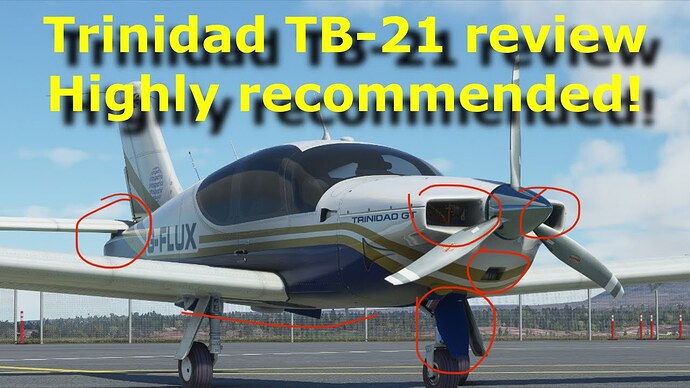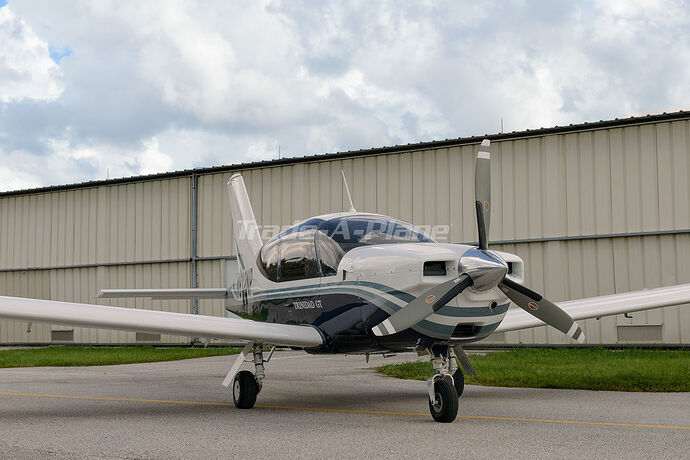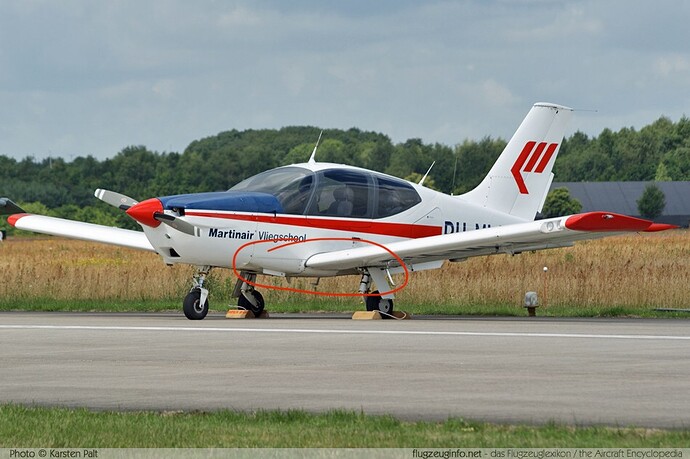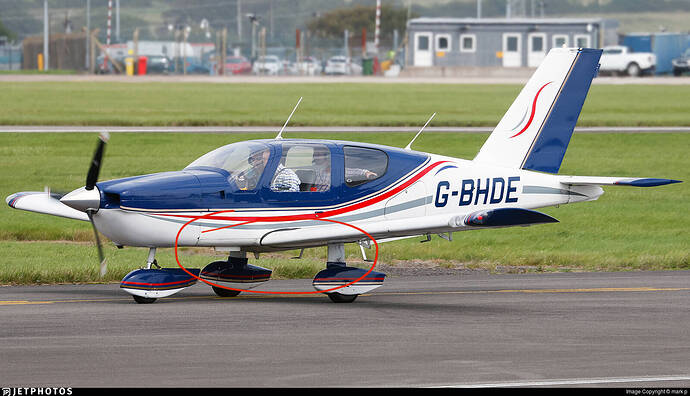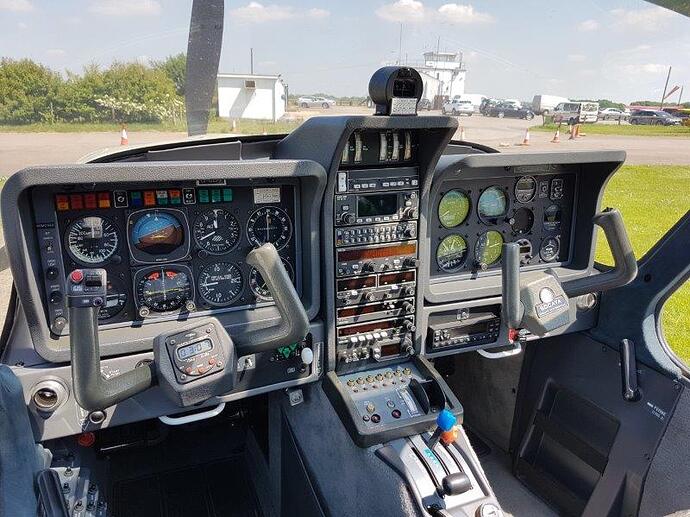That’s correct. See @marccreals reply.
I see… sorry. I was referring to turbocharged pistons as well as turboprops.
In that case, does the Lionheart Trinidad have this same issue? It’s been a while since I have flown it. I seem to recall that it’s been mentioned the aircraft now operates as a proper turbocharged one.
I brought it up here once. After “FlyingsCool5650” wrote that he had asked you about it, I am actually just waiting for an update ![]()
It concerns the “PA-28R Arrow III & Turbo Arrow III/IV Bundle (for MSFS)” for € 55,-. which I bought via “Simmarket”. (0.4.0.exe)
Here’s a link to a post I made on the Just Flight community forum about the trim axis. Basically, after Sim Update 5, the elevator trim axis on all the stock Asobo planes and the Carenado planes was reversed. The trim axis in the JF Arrows remained the way it was before. So for anyone with a hardware trim wheel, the trim axis needs to be reversed every time a person switches between the JF Arrow and one of the stock planes.
It’s hard for me to consider this a bug, since the JF Arrow is the same as it always was. But since all the other airplanes changed, it is a slight inconvenience to reverse the trim axis in the controls options every time I switch planes.
The Carenado Seneca V absolutely has a vacuum system. The gauge works and can be checked according to the provided checklist. I’ve been happy with how well the Seneca’s systems are modeled. If memory serves, the only two significant systems that are not modeled are the fuel system heater and the yaw damper. Otherwise, it’s possible to run the checklist from the real-world Seneca V POH.
Thanx for the info.
Don’t know about MSFS, but in FSX/P3D the yaw damper had been built into the FDE, hence it seems not to be simulated.
It’s certainly not a bug, it’s just that the third parties have to adapt the trim axes to the standard aircraft
![]()
My mistake - I just checked and its the Carenado Seminole, not the Seneca, that says it has a vacuum system in the documentation but doesn’t actually have one
I saw some videos on Youtube of that plane. I have 1500 or so hours on TB- serie aircraft. It doesn’t look quite right, the cockpit panels have the basic shapes but thats basically where comparison with the real aircraft ends, the exterior model is off and the systems aren’t fully simulated.
Compare this:
To this:
Cooling inlets are way too big, especially from the front the model looks completely wrong. The air intake and filter is too small. The TB-20 does NOT have a nose landing gear door other than a tiny little plate fixed to the strut. The bottom of the plane is too flat. The stabilizer does not sit on top of the tailcone like that. Size and shape of the trim tab is way off. The real aircraft has the engine installed at an angle (to compensate for slipstream effect).
The main landing gear does not fully retract into the wing center box, instead there should be a wing fearing making the plane a little more “fat” looking, the bottom of the plane should be more rounded compared to the flat bottom panel of the TB-9 or TB-10, also the wings need a little more dihedral?
TB-20/21:
TB-10:
It claims to be a GT but the cockpit is that of a regular TB-20/21. Also not quite though, everything is way too round, also the pre-GT versions don’t look like that.
GT cockpit:
And then I’m not going into the details, I already loads of errors in the annunciator panel, red lights being green, at wrong places etc. Landing gear lever is an small switch type lever, not a slot. Rudder trim knob is at the wrong position. You can’t start with mixture full rich without flooding the engine in real life. I doubt the flight model is any better than the rest of the model.
There was a JF version for X-plane including the TB-10 and TB-20, the TB-20 was awesome, the TB-10 was just a copy of the TB-20 model where they welded the gear down. They didn’t even bother to shorten the nose (TB-10 has a shorter nose), the air inlet for injection engine was still there (TB-10 is carbureted). The TB-10 was a big disappointment.
Anyway, the TB-20 is not turbocharged, I’m not sure about the TB-21.
About your notices on the TB-21, have you reported any of that to Bill, from Lionheart Creations ?? The guy is working hard on his planes to get them as correct as can be, I did report some bugs and made remarks on the 1st version, which had limitations and some bugs, and the last version of the TB-21 is really better ! All old xml gauges were replaced by the modern ones, textures are a bit brighter, bugs ironed etc (and we didn’t have to wait months to get the patches, as for Carenado planes !).
Alkso, the turbo logic is not implemented in MSFS. It was supposed to be supprted : Shock Ultra is (supposed to be) a turbo plane… but instead of getting the system right, at the 1st update of the sim, the team at Asobo removed the button (for the turbo mode), without working on the turbine logics for pistons with a turbo.
No plane in turbo can stay at full manifold pressure all the way to their cruise altitude (as required by most turbo-pistons) in MSFS. The air density/ altitude/ fuel pressure etc formula is all wrong, so DO NOT EXPECT A GOOD TURBO PLANE !
About Carenado’s Seneca V : it is a limited support plane, with limited functions, but so far it seems to be the more complete Carenado plane for MSFS. But it does not work as intended at all if you have any knowledge of the real plane… It is (like all Carenado planes) a nice shell, with no soul, you can mess up the startup sequence and get engines running like normal, oil temp is all wrong etc…
And the turbo, as on all other turbo planes, is not working.
AFAIK, editing the specs of the Seminole would be exactly the same result in terms of performances.
Someone stated the TB-20/21 might be a good turbocharged aircraft, I simply gave my feedback.
No plane in turbo can stay at full manifold pressure all the way to their cruise altitude (as required by most turbo-pistons) in MSFS.
I disagree with this statement. I’ve taken the Seneca V to 20,000 ft (the rated critical altitude for the Seneca’s turbochargers), and it holds manifold pressure as expected all the way through the climb. There are a few problems with turbocharger logic in MSFS, but holding manifold pressure is not one of them. One of the biggest problems is fuel/air mixture. The sim calculates fuel/air mixture for a turbo engine the exact same way it does for a naturally aspirated engine – based on the ambient air density at altitude rather than the density in the engine’s intake manifold. This results in excessively rich fuel mixtures and loss of power as the airplane climbs.
Which means the aircraft is extremely fuel efficient in MSFS? Same manifold pressure for a lower (leaned) fuel flow? That’s cool!
Better explained indeed, there are a number of problems with how some planes fly anyway, and mixture is one of those. As I tried to say there is not yet any “turbo engine” logic in MSFS…
No, it doesn’t work out that way. In MSFS, full-rich mixture at high altitudes results in a mixture that is way too rich. If you lean the mixture, you will eventually reach a lower fuel/air ratio that corresponds to full-rich in real life. At that point, fuel flow in the sim will be similar to real-world performance at full-rich mixture. Leaning the mixture further will be similar to leaning the mixture below full-rich in the real-world. Fuel flow will drop somewhat and engine fuel efficiency should be better.
The main problem is the excessively rich mixture. After you lean to the same fuel/air ratio that would correspond to rull-rich in real-life, the sim logic will produce reasonable engine performance.
Well, MSFS certainly has turbocharger logic. It needs to be improved, but the logic exists. If there were no turbo logic, a turbo add-on like the Seneca V would not be able to achieve proper performance at high altitude. But it certainly does. It just requires adjusting the mixture to avoid the overly-rich condition that MSFS erroneously simulates.
Just bought this and found out the controls are essentially broken in VR: it doesn’t have the collision surfaces setup correctly so when not on a control the mouse is falling back quite far into the distance, making it very difficult to use.
There’s 365 posts in this thread now, and VR is “too short a search term” so I can’t even search for solutions in a reasonable manner.
Is there any solution, is this issue known?
edit: also MSFS crashes if you try and set the VFR camera position with this plane (it works in other planes I have tested).
edit2: VR zoom with right click also doesn’t work.
I cannot really help you aside from confirming your bugs.
The mouse implementation in VR is not really good and I shut 1 eye when I need to click on things. Also, VR zoom is not implemented in this aircraft I think.
But I bought it yesterday as well and love it aside from those things. Hopefully, with the 30% off, they will sell a lot of those and get the will to fix more things.
Did the same and purchased it during the sale.
Overall love the plane
However same comments and critics about VR implementation
-Difficult to click on a few items (need to close an eye to accurately use few buttons)
-More of an issue - Lack of Click right to zoom on anything in the cockpit - Please fix that MSFS!!!)
